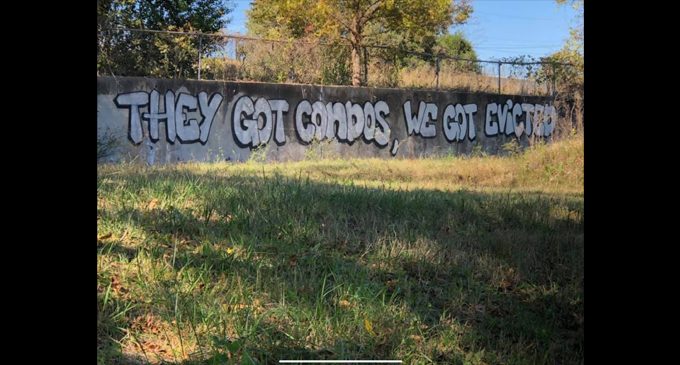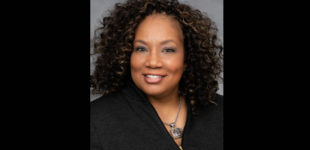Gentrification Symposium creates platform for serious conversation

Last week dozens of community stakeholders came together to discuss the root causes and solutions to a phenomenon that is taking hold of communities across the country and has the potential to do the same here in Winston-Salem – gentrification.
Gentrification is defined as the process of renovating a house or district so that it conforms to middle to upperclass taste. It’s no secret that gentrification often leads to dismantled minority neighborhoods and priced-out residents. Last year the city’s Human Relations Department and the New Horizons Fair Housing Committee came together to have a serious conversation about gentrification and its impact on the community.
With the growth of downtown over the past decade, many believe it’s only a matter of time before over-priced townhomes and apartments begin showing up in the surrounding communities and displace thousands of residents. When discussing the need for the symposium with The Chronicle last week, Wanda Allen-Abraha, City of Winston-Salem human relations director, said with talks of gentrification growing, they felt the need to create a platform where residents could share their thoughts and opinions with other community stakeholders and elected officials.
“The purpose is to create a platform for the public to be able to interface with government officials, non-profit organizations, and a few people from our local colleges and universities to talk about some best practices and solutions to what many people perceive as gentrification,” Allen-Abraha said.
The symposium held at the Anderson Center on the campus of Winston-Salem State University on Wednesday, Nov. 6, featured several guest speakers and breakout sessions that covered a number of topics including a history of gentrification and public housing and innovative planning solutions to combat gentrification, just to name a few. The opening speaker was James Perry, president and CEO of the Winston-Salem Urban League (WSUL).
Before taking charge of the WSUL, Perry served for 10 years as the Chief Executive Officer of the Greater New Orleans Fair Housing Action Center. Perry led the center through Hurricane Katrina. He also serves on the National Fair Housing Alliance Board of Directions.
Perry said when discussing gentrification, it is important that we step back and take a look at segregation. He said the most important precursor to gentrified neighborhoods was segregation.
He said while some people believe gentrification is a result of choice, history tells us that policy change is what led to widespread gentrification.
“Many people presume that it’s simply about people choosing not to live next to each other. They presume that it is a fundamental decision by property owners to buy in a particular neighborhood, but what history suggests is that that’s not true,” Perry continued. “This doesn’t just happen all across the nation based exclusively on this idea that people choose where they want to live, it really is about the way federal funds were spent in a very purposeful way in the middle part of the last century.”
Perry continued to discuss the history of segregation and how the construction of the U.S. Highway System and other policies led to gentrified communities. To support his claims, throughout his presentation Perry showed maps of several major cities where widespread segregation led to gentrification.
When looking at the map of Winston-Salem, Perry said although everyone knows Winston-Salem is segregated, the data shows that between 2000-2016 there has not been any gentrification. He said, “We haven’t really suffered the consequences of gentrification yet.”
Perry said the data shows that most communities have stayed the same or become poorer. He said although the data doesn’t give the community anything to be proud about, it does give us an opportunity to stop gentrification before it takes hold in Winston-Salem.
“I think we still have an opportunity to get ahead of the curve,” Perry said. “I suspect if we look at this map in about five years, because of the changes at Crystal Towers and Plaza Apartments, we’ll actually see some dramatic changes.”
To wrap up his presentation, Perry gave three potential solutions to combat gentrification. He said as a community, we must focus on development rather than displacement, land banking, and more opportunities for home ownership. He mentioned that having open conversations about gentrification like this symposium are a step in the right direction as well.
“Home ownership is one of the few things that can stop gentrification. Oftentimes when we talk about neighborhoods that have been gentrified, they are mostly occupied by renters, so they don’t have much say in what happens in the community that they live in,” Perry said. “I think many of you know that African Americans have fairly low home ownership rates compared to white residents and one clear solution would be moving people to home ownership in the communities that they feel comfortable.
“I think that gentrification sometimes can be a difficult concept to wrestle with, but in the end it is certainly solvable, but it really does take conversations that start with people that actually live in the communities that could become gentrified.”
The keynote address during the symposium was delivered by Dr. Nishani Fraiser, associate professor of history at Miami University of Ohio. Dr. Fraiser’s address was recorded and will be available on the city’s YouTube channel.











